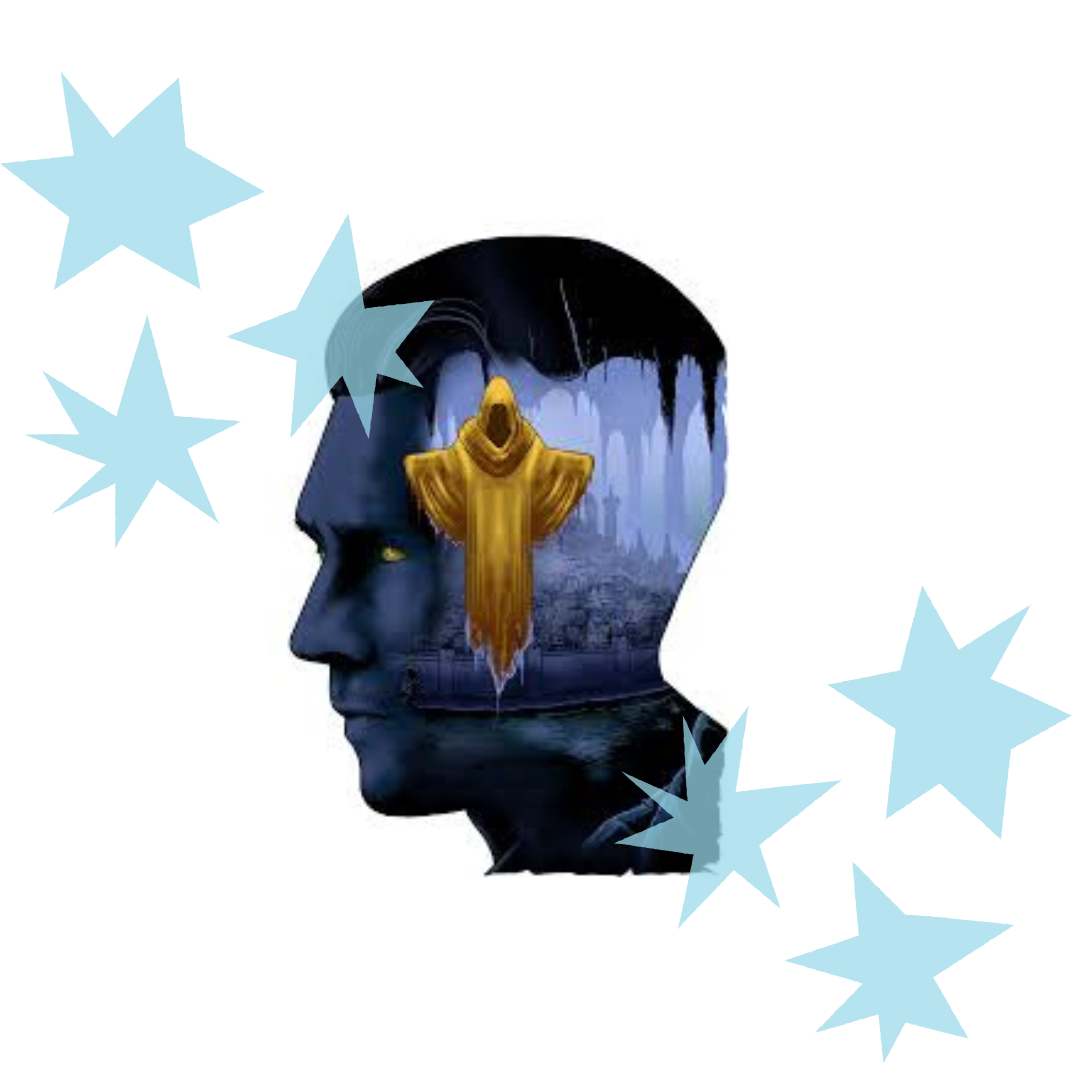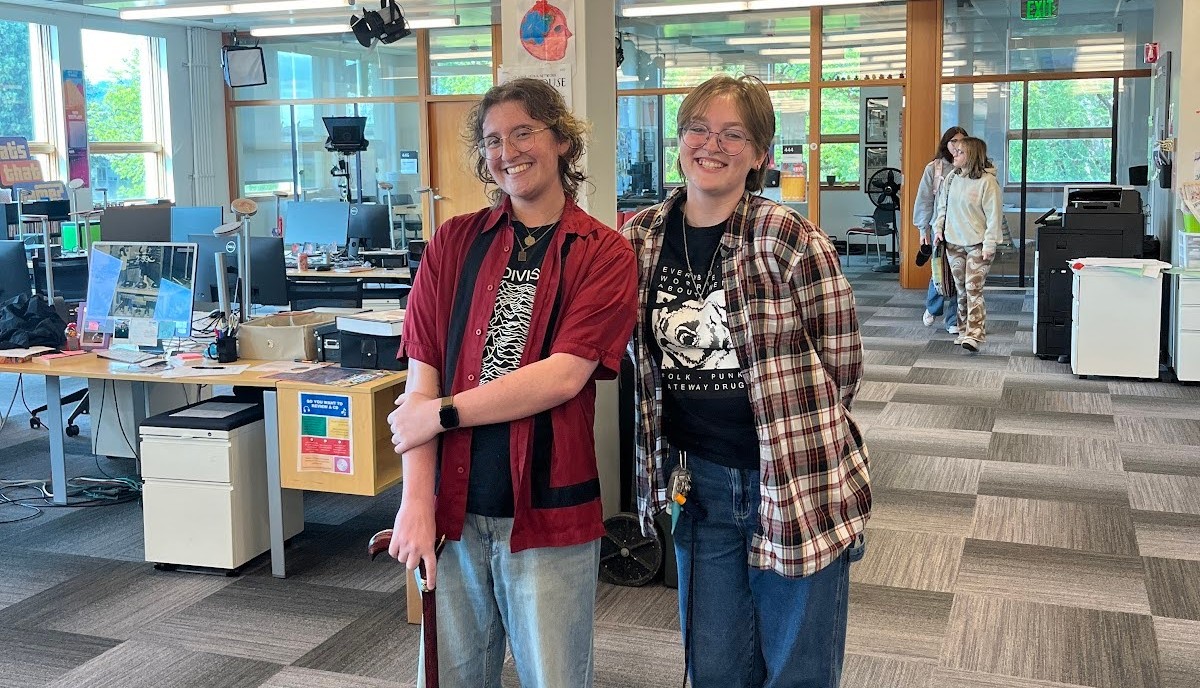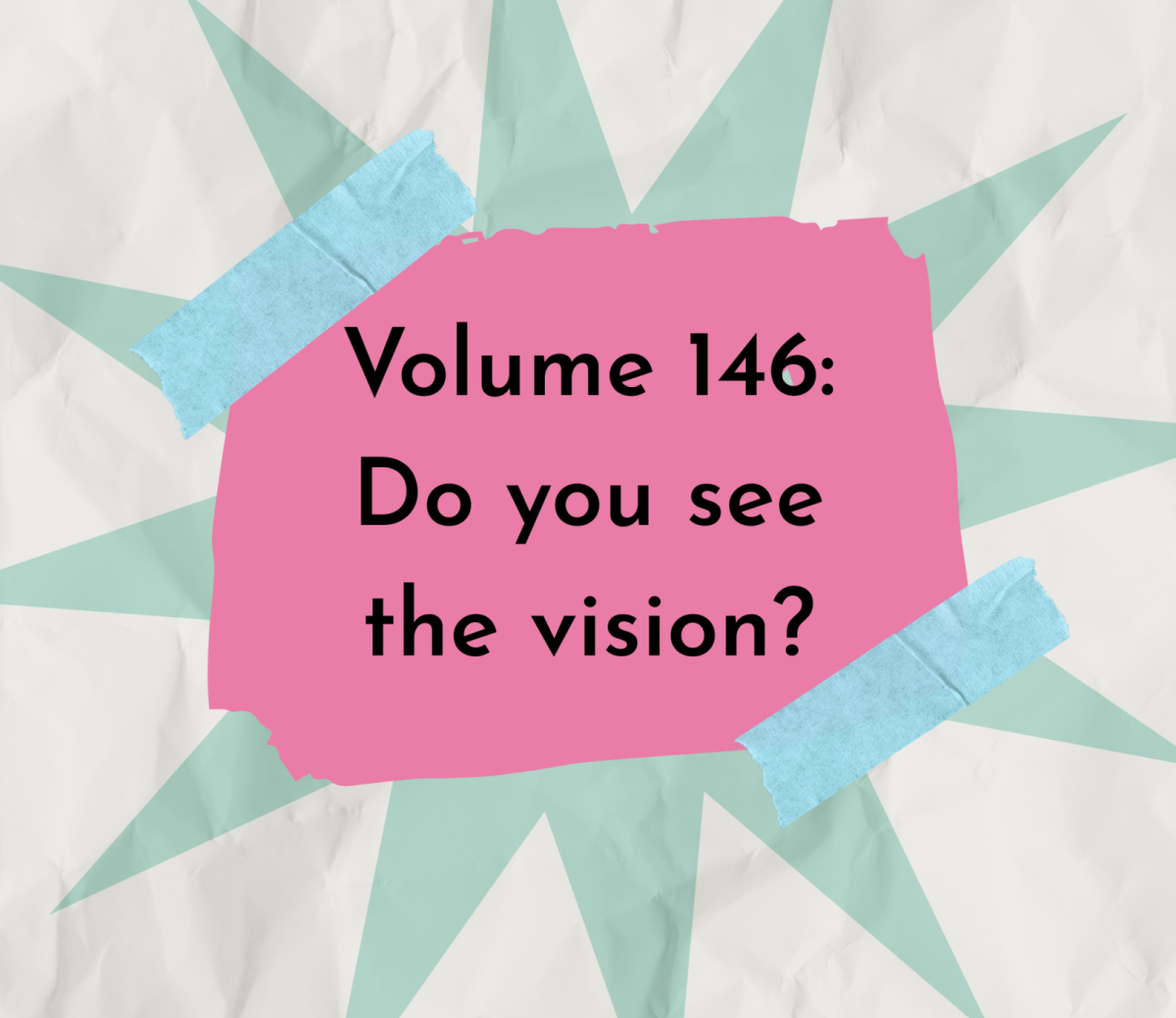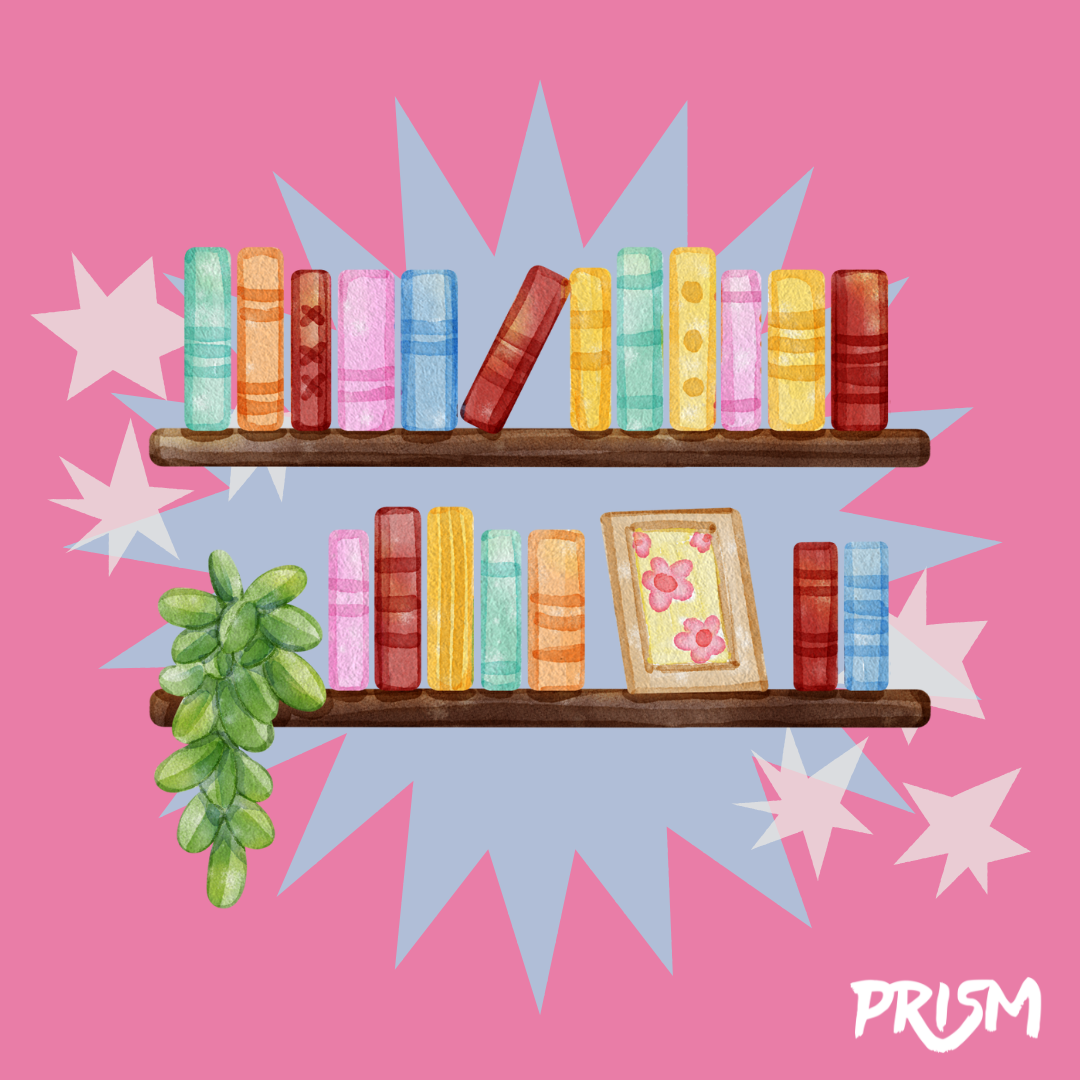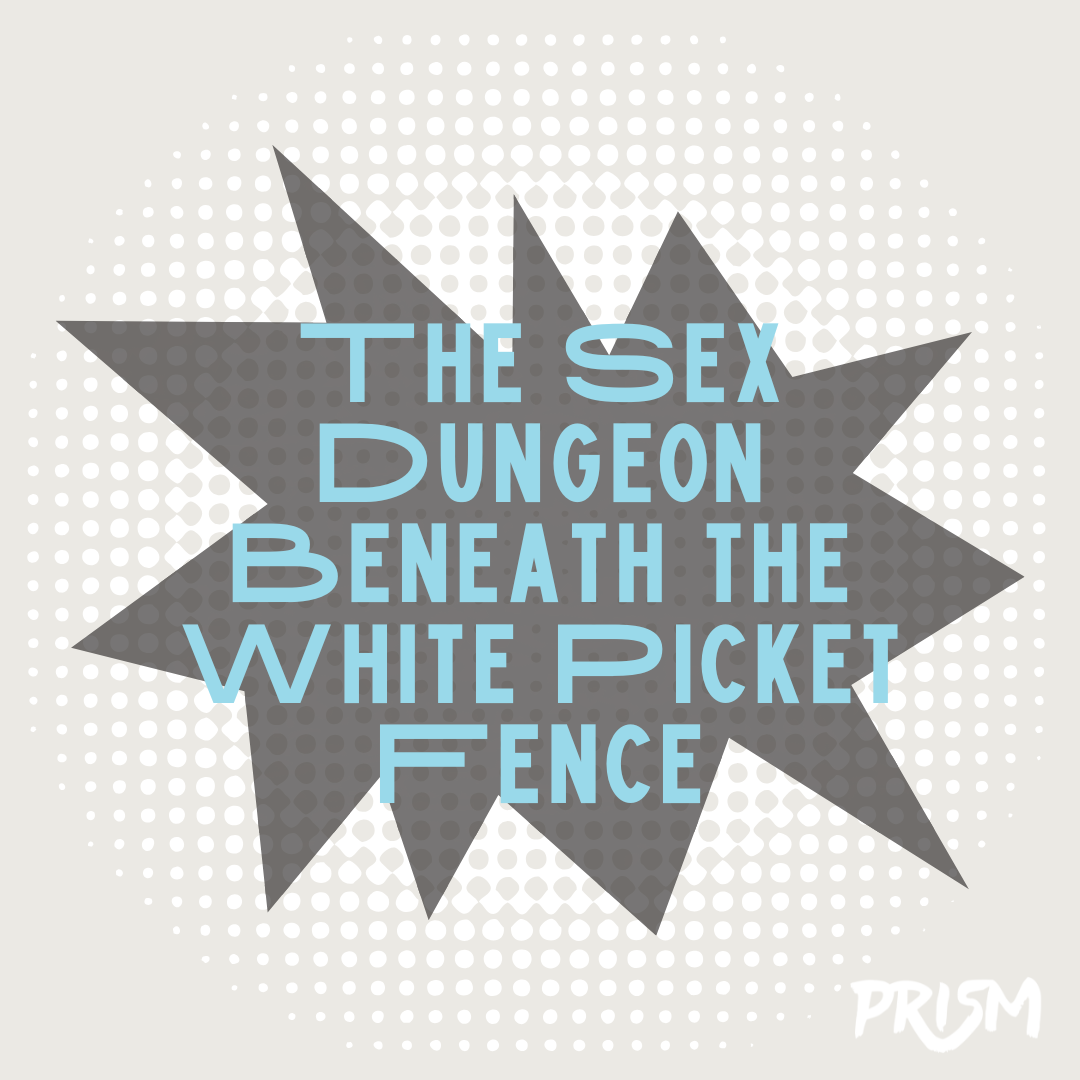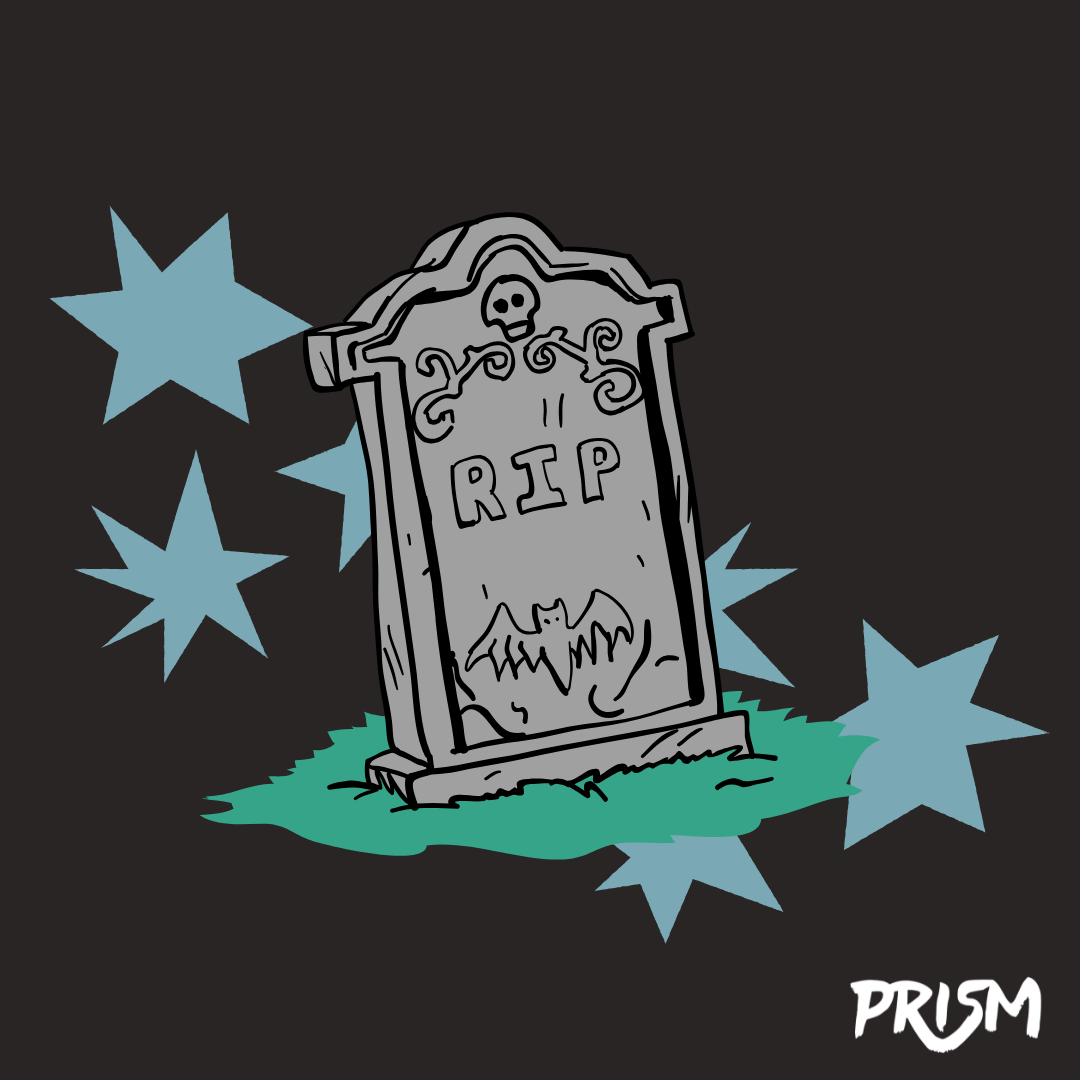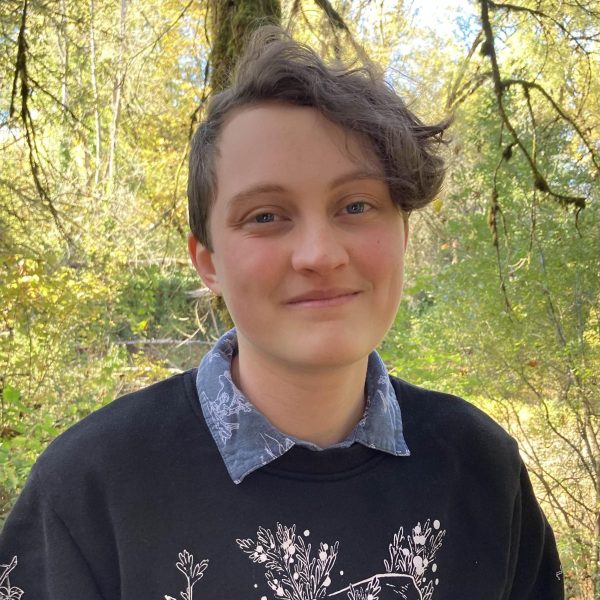Warning: The following contains spoilers for the podcast “Malevolent.“
It comes as no surprise that certain demographics tend to gravitate more towards certain genres. But there is one prevalent connection in particular that intrigues me more than any other, and that is the intricate union between queer people and horror. Why is this such a well-known and well-documented phenomenon? Why is it that when you type “why do queer people…” into a search engine, the very first suggested autofill is “…love horror”? What is it about the themes in horror, a genre preoccupied with instilling fear and discomfort, that speak to our experiences?
In order to explore all of these questions, I want to take a close look at my favorite piece of horror media as of late: “Malevolent.“ “Malevolent“ is a Lovecraftian eldritch horror podcast that has been releasing monthly episodes since July 2020. The story follows private investigator Arthur Lester, who wakes up blinded and with a strange voice in his head — a voice who has taken control of his sight. Despite their distrust for one another, they’re united by the shared goal of finding out how exactly they got stuck together, and whether it is reversible. Throughout the podcast, they have their fair share of ups — learning how to work together, and being vulnerable with one another about their pasts — and downs — fighting and betraying one another’s trust — but ultimately forge the strongest bond either of them have ever known.
While the mystery aspect of the story is certainly a main component, the bond between the main characters is arguably the largest aspect of the podcast that draws people in and keeps them captivated. Arthur and the entity in his head’s relationship is ever-shifting, as vulnerable as it is visceral, and through it they both grow and change significantly over the course of the show. The entity, who is a fragment of the eldritch god, the King in Yellow, chooses the name John for himself and must learn over and over what humanity is — and how he holds it within himself. Arthur struggles with guilt and self-loathing over his daughter’s death, frequently finding himself teetering on the edge of a dark path just as often as he chases after hope and forgiveness. Together, the two weather hardship and foster vitriolic hatred for the other, and in the next breath prove their undying devotion to one another in a dizzying spectacle of what it means to be human.
Throughout it all, there are countless moments where you could read queerness into the relationships and character arcs within “Malevolent” — and a huge portion of the fanbase does. But, to be totally clear: This blog post is not claiming that any of the queer identities I discuss are the true nature of any of these characters, nor even that it was the intent of the creator to portray these allegories. Instead, this is a close look at the ways that these characters’ arcs and journeys resonate with those of queer people, and how important it is to be able to see oneself in art — even if that art includes horrifying monsters and harrowing situations.
Arthur Lester and Compulsive Heterosexuality
Arthur’s primary source of self-loathing and shame throughout the podcast stems from one moment in his past — one moment that irrevocably altered the rest of his life. Before Arthur was a private investigator, he was a composer, and he threw himself into it to avoid his life outside work; unfortunately, one day his preoccupation and negligence led to him forgetting his daughter in the bathtub and leaving her to drown. In comparison to that moment, which comes up again and again throughout the entire podcast, we hear shockingly little about the mother of his child — his late wife, though she is only ever referred to that way by other characters, and never by Arthur himself.
Arthur and Bella met when they were young, and got married only when Bella’s father pressured them into it after Bella got pregnant. Arthur was apprehensive about it, and it is revealed when Arthur confronts her father for the first time after her death that she also did not particularly want to get married. But their relationship woes did not end there. While Bella was actively in labor at the hospital, Arthur was getting drunk at a bar with a friend — explicitly telling his friend that he actually did not love Bella, and that he wanted to leave her because the relationship felt “wrong.” By the time he actually showed up to the hospital, his newborn daughter, Faroe, had been alone for an hour, because Bella died in childbirth.
Every time Bella comes up throughout the podcast, Arthur is constantly undermining the nature of their relationship, focusing on the discomfort he felt within it. But the situation was complicated, not as cut-and-dry as him hating her but feeling stuck. He truly liked her as a person, as he readily admits, and as the eldritch god Kayne implies when he talks about watching Arthur grow up, and “fall in love! Or … like — let’s call it like.” There’s no arguing that their relationship was fraught with complications, or that the things Arthur did — or rather, didn’t do — were unacceptable. But it is also important to consider the time in which the story takes place: the 1930s. Far before queerness of any kind was accepted, and when compulsory heterosexuality didn’t even have a name yet because it was so universally accepted.
In 1980, Adrienne Rich coined the term “compulsory heterosexuality” in her paper “Compulsory Heterosexuality and Lesbian Existence.” Although she wrote about it from the specific perspective of how it marginalized women’s (and particularly queer women’s) experiences, the basic idea can be applied more generally: Society assumes and forces heterosexuality onto everyone. When internalized, this can look like someone believing that they have a natural, innate preference for relationships with the opposite sex; it can look like queer people being in relationship with people who they are not actually attracted to, simply because it’s been ingrained into them that they should.
Arthur Lester’s experience is a textbook example of internalized compulsory heterosexuality. During the 1930s, anything other than heterosexuality (and especially church-approved heterosexuality, as proven by his father-in-law’s insistence that they get married when Bella was pregnant) was considered wrong — if it was considered at all. Arthur speaks occasionally about being raised religious, and though he is no longer and holds significant trauma from the experience, he would have internalized the ideas about queerness being sinful. He possibly never even considered the idea that he was anything other than straight. So when he met a girl that he liked well enough, he thought that maybe that was all he needed for a relationship. But once bigger commitments started piling up — marriage and having a baby — the incongruence of what his life was shaping up to be versus the desires he truly had started to become too big to ignore. He couldn’t deny the fact that he wasn’t in love with Bella the way that he should be. He felt a deep-seated sense of wrongness in his relationship with her. He avoided being present for the birth of his own child and continues to never refer to her directly as his wife because these things would confirm their union.
These experiences are very common for queer people who end up falling prey to compulsory heterosexuality — not just for people who identify as strictly gay. People who are on the aromantic and/or asexual spectrum also experience this — the expectation that they participate in romantic or sexual relationships that do not feel right to them. The events of “Malevolent“ support a reading of Arthur as either gay or aromantic; he never expresses explicit romantic interest for anyone during the show, but he does show a deep and profound love — however you want to interpret that love — for John. He stresses how he never loved Bella, but he easily and freely says that he loves John. He did not love the woman he spent much of his life with and agreed to marry and raise a child with, but does love a fragment of an eldritch god he has known for mere months and with whom he has fought nearly as often as he has sacrificed everything for.
Regardless of the way one chooses to interpret Arthur’s experiences, the fact remains that the canon events of the story are ones that are steeped in compulsory heterosexuality. Many gay fans of the show have seen themselves in his complicated relationship to Bella, just as aromantic fans have been delighted by his and John’s dedicated queerplatonic love. Whether intentional or not, plenty of people have been able to heal through this portrayal of their experiences, in all their complexity and ugliness.
Eldritch Gods and Trans Joy
John, as a fragment of the King in Yellow, and Kayne, as this story’s Nyarlathotep, are the main two Lovecraftian eldritch gods that we meet and interact with throughout the course of “Malevolent.“ Both of their stories are very much tied up in identity; John’s more explicitly so, and from a perspective of mindfulness and self-acceptance, while Kayne’s is more about active self-conceptualization. In both cases, however, the paths they have taken to get where they are feel intimately familiar to trans people’s experience of identification and transition.
John struggles with his identity all throughout the show. For most of the first season, he doesn’t even realize he’s the King in Yellow until the very end. Once he does realize, he struggles with what it means to be a fragment of a god stuck within a mortal, and what it means that he holds guilt and shame for his past actions. He begins to see humanity as something beautiful; something that he has historically crushed without second thought, but now wants to be a part of. He takes on the name John during season one, but it isn’t until partway through season four that he is no longer referred to as “the Entity” in the official descriptions of the episodes. This shift also happens to coincide with a massive climactic moment for his character arc.
Part 43, “The Witch,” is the main episode I want to focus on because it is the most beautiful moment of trans acceptance and joy through all of John’s arc. Arthur has been fatally wounded by the strange and powerful witch, and John speaks to the witch through his dying (and later, dead) body. The primary point of conflict between them — other than the very urgent wounding of Arthur and her refusal to help — is when the witch claims that John’s love and yearning for humanity is childish and ignorant, and that he was better and stronger when he was the King in Yellow. Every awful thing John admits to doing — both before and after he became trapped within Arthur — the witch praises, while John disparages. He repeatedly claims that his love for Arthur is what saved him, and made him want to change — what has prevented him from becoming monstrous again like his past self. When the witch tries to point out that he has been a monster far longer than he’s sought humanity — that he even introduced himself as the King in Yellow in an attempt to intimidate her — John doubles down and says that he is John, and that he is “(his) own. Entirely (his) own.”
This back and forth between John and the witch acts as the climax for John’s struggles with identity throughout the entire show. Since the beginning, he feels conflict in what he perceives to be two halves of himself: his past, his “true” nature, the monstrous and powerful being that he had always been; and his current self, who makes mistakes and feels guilt and loves Arthur and humanity, who he strives to embody. For much of the show, he holds both of these fractured parts, uncertain which one is more “real” and whether it is hopeless for him to believe he can be anything different. But in this moment — in this conversation — he realizes what has always been true. He was once the King in Yellow, and he still feels a connection to that title and the temptation to reclaim it. He acknowledges the horrible things he once did, and the shame he feels at having done them. But thanks to his relationship with Arthur and his insight into humanity, he is able to resist that temptation. He desires to change, to be better. And, ultimately, who he once was matters less than who he chooses to be now: someone who is entirely his own.
I can’t speak for trans people as a whole, but I can speak to my own experience, and the ways that John’s character arc strongly resonates with me. I, like many trans people, feel a disconnect between the person I once was, who performed a gender identity they didn’t truly feel simply because they didn’t realize there was an alternative, and the person I want to be, my authentic self. Like John, it can be challenging to hold both of these parts at once without worrying which one is more “real.” That anxiety is what kept me from transitioning and becoming a better, happier version of myself for so long. The witch, whether as another person or just a voice inside one’s head, represents the doubt and shame many trans people experience. She kills the person who made John believe he could change, tries to convince him that he was better before, and points out the ways he’s still tethered to his past. Internalized transphobia can be a horrible thing, and the way the witch treats John is painfully familiar to that experience.
But John is able to push past the anxiety and internalized bigotry and fully embrace self-acceptance; he can recognize that one’s past and desires for the future can coexist, and that what matters most is who you want to become. It is no coincidence that after this episode he is officially referred to as John — the name that he quite literally chooses for himself in the first season, because it feels more authentic to him — in the episode descriptions; he accepts himself, and so the narrative itself stops “deadnaming” him too. He can move on as his true, authentic self, who requires work every day to construct, but who he is all the more happy and at peace to be.
But funnily enough, John is not the only eldritch god in the show to have themes that resonate with trans individuals. Kayne is the main antagonist of the show, and is proven to be a strange, chaotic, dramatic individual. When Arthur and John first meet him in the season finale of season two, surrounded by the carnage of a city he destroyed, Arthur asks his name. “Good question!” Kayne says, and after a pause, “Let’s go with Kayne.” Much later, at the beginning of season five, Kayne reveals more about his nature to Arthur. He explains about the multiverse and the way that every god has little pieces of themselves in each universe, which limits their overall power. He tells Arthur that he single-handedly went to every other universe and killed all of his other selves, leaving him as the sole Nyarlathotep, the sole Kayne, and allowing him the amount of power and control he has.
If John represents the struggle of self-identity and the slow, loving process to self-acceptance, Kayne is the chaotic joy of trans anarchy — a path to self-love that involves action and rebirth, rather than integration. Rather than choosing a name for himself borne out of quiet discovery, he comes up with one on the fly. He does not feel the need to argue with others about who he is, and does not show the same hesitance and care in handling the other facets of his identity like John. Instead, he quite literally recklessly destroys every other version of himself in order to live as the sole version of who he wants to be. While John is able to reconcile his multifaceted experience and move forward while holding on to the past, Kayne eliminates every other possibility of who he could be, emphasizing who he is.
I can relate to this experience of trans identity too. While like John I am able to feel gentle acceptance towards the person I once presented myself to be, before I realized that I could be something different, I also feel distinctly separate from who I once was. As much as I don’t want to think about or be held up by that person, inevitably there are people who still think of me as I was back then. I will always be haunted by them to some extent. But Kayne is able to wield his power to destroy all of those versions, leaving his chosen self as the only version left — a liberation I and many other trans people strive for through transition. I am destroying the person I was before to be reborn and thrive as the person I am now.
The way that “Malevolent“ uses struggles with identity to blur the lines between gods and mortals is fascinating. What happens when a god falls in love with humanity and wants to join them? What happens when a god wants to control their own narrative, and will go to any lengths to make that happen? Well, it turns out to be not too far off from the experiences trans people live every day. We are able to remake ourselves into the image we want to see in the mirror, like claiming a little bit of divinity for ourselves.
Why Horror?
“Malevolent“ is far from the only piece of horror media that explores inherently queer themes in its storytelling. I can easily think of several more I’ve consumed just within the past couple of months that fall into this category (for those interested: “The Magnus Archives/Protocol,” “The Locked Tomb,” and “Don’t Let the Forest In” are all fantastic queer horror works I recommend!), and even then I’m only barely scratching the surface. And this is not even to mention the fact that the vast majority of the fanbases for “Malevolent“ and all those other works I mentioned are queer themselves.
But why is this? Why do queer people love horror so much? Well, just like the spectacular spectrum of experiences that queer people have, as explored earlier in this blog post, the reasons for this phenomenon are also wildly varied and complex. I will not attempt to speak for the entire community, but I will share why I particularly love horror and queer themes in my horror.
For one, horror as a genre is inherently subversive. Some of the best horror is the kind that explores things nothing else has or can, or the kind that can only be told as horror. So often horror stories have a complicated and passionate theme they are trying to tell at their center: love and grief in “The Locked Tomb” (which I wrote a whole other blog post about!), complicitness and objectification in “Mouthwashing,” identity and change in “Malevolent“, and so on. When done well, horror is an inherently thoughtful and challenging genre just as much as it aims to disturb and terrify.
And that disturbance, too, is relevant to this discussion. For so long, queer relationships and ways of living have been viewed as something unnatural and disgusting, and this idea too often gets internalized by queer people themselves. This is why villains and monsters are often so endearing to queer people — we can see ourselves easier in these characters than in the heroes who embody a life we were locked out of from the start. It is well known by this point how Disney has a history of queercoding villains. Although this started as a way to subconsciously influence perceptions of queer people, it also had the unintentional side effect of causing queer people to identify more with villains, since they were the only form of representation we had. The themes one can find in lots of monsters works similarly — take werewolves for example: someone considered beastly and evil but who can theoretically “pass” as a normal human, someone who has to hide who they are, and someone who can only express their true identity under the safe cover of darkness.
This is not even to mention the genres of horror that feel like inherently queer experiences, such as the way that body horror often perfectly encapsulates the way that it feels to be a trans person. PRISM volunteer Laurent Kate wrote a brilliant blog post about body horror, which I heavily encourage everyone to check out if they enjoyed this post.
The topic of why horror is such a queer genre is one that could have an entire blog post all of its own, so I’ll avoid rambling about it for too long. If you’re queer and a horror fan, I would love to hear why it speaks to you in the comments of this post!
Regardless of the creator’s intentions, I think it’s incredible that “Malevolent“ has been able to speak so profoundly to so many queer people’s experiences. Not only is the fan community one of the loveliest I’ve witnessed, but the story itself is thoughtful and engaging and rips my heart out just as often as it makes me laugh. There’s something beautiful in queer people being able to find such belonging and joy in a genre so bloody and terrifying, and I await with bated breath what other experiences are able to be explored this thoughtfully through horror.


